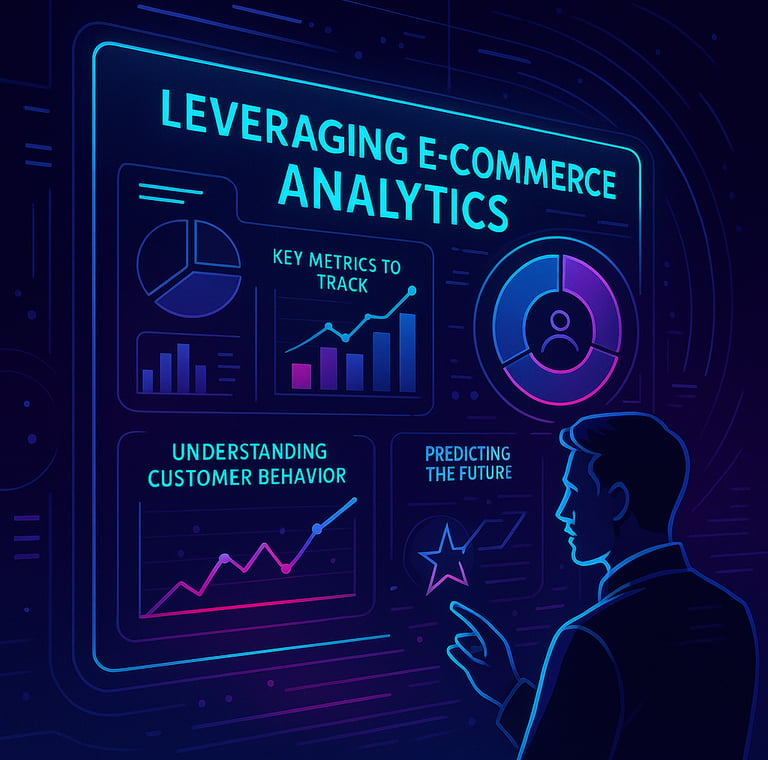Leveraging e-commerce analytics
Mr. Hunain Panjwani
10/1/20252 min read


1. Key Metrics to Track 📊
A robust analytics strategy starts with tracking the right metrics, known as Key Performance Indicators (KPIs). You'll want to go beyond simple sales numbers to understand the entire customer journey.
Acquisition Metrics: Where are your customers coming from? Track traffic sources (e.g., social media, search engines, paid ads) and their respective conversion rates.
Customer Behavior Metrics: This is where you get into the mind of your customer. Track metrics like bounce rate (the percentage of visitors who leave after viewing a single page), average session duration, and click-through rates to identify which pages are engaging and which are causing friction. Tools like heatmaps can visually show you where users are clicking and scrolling.
Sales Metrics: Go deeper than total revenue. Track average order value (AOV), conversion rate, and cart abandonment rate to pinpoint where you're losing potential sales and how you can increase the value of each transaction.
Retention Metrics: It's more profitable to keep a customer than to acquire a new one. Analyze customer lifetime value (CLV) and repeat purchase rate to understand customer loyalty and the effectiveness of your retention efforts.
2. Understanding Customer Behavior Analysis 🧐
Once you have the data, the real work is in understanding what it's telling you. Customer behavior analysis helps you segment your audience and personalize their experience.
Audience Segmentation: Group your customers based on shared characteristics like demographics, purchase history, and behavior. You can then tailor your marketing campaigns to each segment. For example, you can send a specific email campaign to customers who haven't made a purchase in 90 days or offer a discount on related products to a segment of frequent buyers.
Identify Pain Points: Use data to find friction in the user journey. For example, a high bounce rate on a product page could indicate a poor description, unclear pricing, or bad images. A high cart abandonment rate may point to a complex checkout process or unexpected shipping fees.
Personalization: Leverage analytics to provide a tailored experience. Use purchase history and browsing data to offer personalized product recommendations on your homepage or in email marketing, making the shopping experience feel unique to each user.
3. Predicting the Future with Sales Forecasting 🔮
Sales forecasting uses historical data and statistical algorithms to predict future demand. This is invaluable for inventory management, budgeting, and optimizing your marketing calendar.
Historical Data Analysis: Analyze past sales trends to identify seasonal peaks and valleys. A business that sells snow boots will have different demand patterns than one that sells swimwear.
Predictive Analytics: Use tools to forecast sales based on multiple variables like past performance, marketing spend, and even external factors like holidays or macroeconomic trends.
Inventory Management: Accurate forecasting helps you avoid both stockouts and excess inventory, which can significantly impact profitability. This ensures you have the right products in the right place at the right time.
By continuously tracking, analyzing, and acting on your data, you can create a cycle of data-driven decisions that keeps you one step ahead of the competition.
